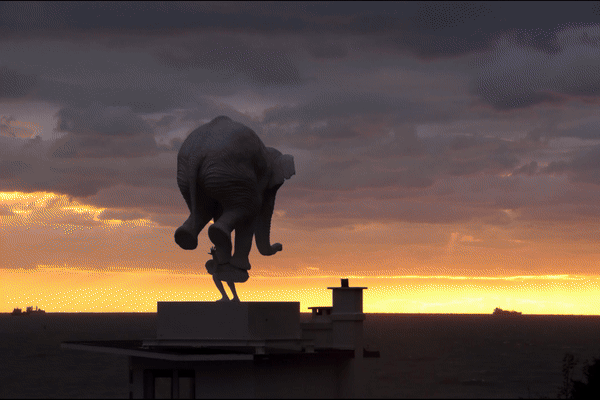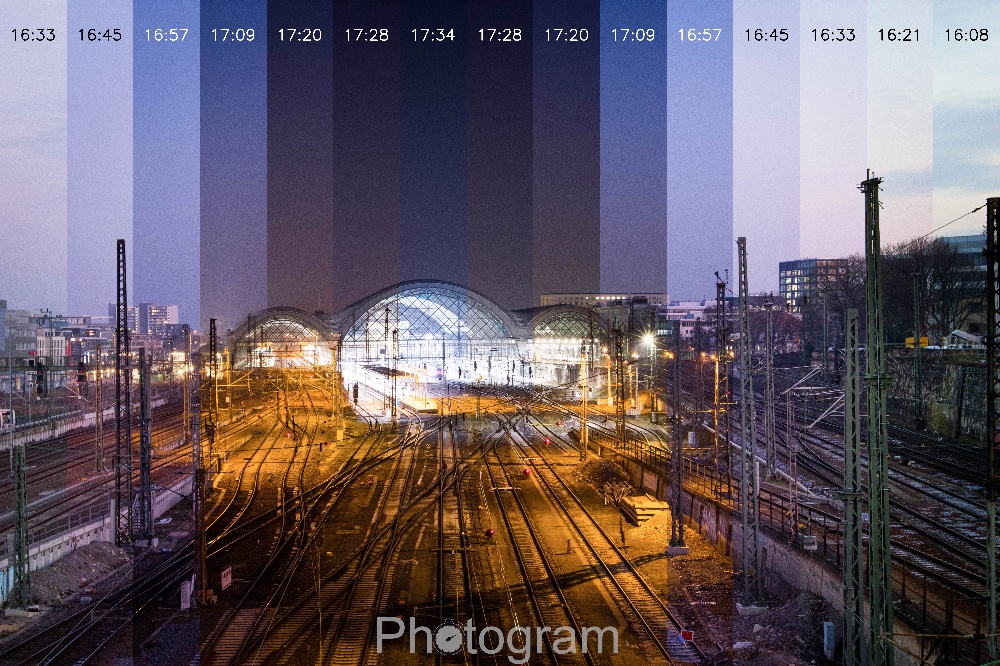Photogram - Time evolution in one frame
A time-slice is a fixed picture that visually represents a scene throughout time. See examples below.
The input is the series of time-lapse images, showing for instance a sunset. After very short process, the time-lapse is transformed into a time-slice. By scanning the time-slice horizontally, the viewer can appreciate several extracts from different moments in time.
The aim of this page is to explain how the Photogram app works and thus how anyone can create their own time-slice in a few simple steps.
Transforming a time-lapse into a time-slice:
The input is a conventional time-lapse.

After choosing your preferred settings, hit the render button and get your result :
Notice how the purple tints of the sky appear in the first photogram and vanish in the second one.
Thanks to local variations, you can smoothly but strongly emphasize a specific period of your time-lapse, for instance some nice colors in the sky, or to diminish one where the lighting would not be especially interesting.
7. Add timestamps (new)
This table enables to print the original picture timestamps on each stripe.
This option is especially useful to help the understanding of what a time-slice is.
To test the App you can use the following image samples :
This desktop application is a personal project created during my year of Erasmus exchange at the Technical University Dresden, Germany. For any suggestion or critic please contact me.










